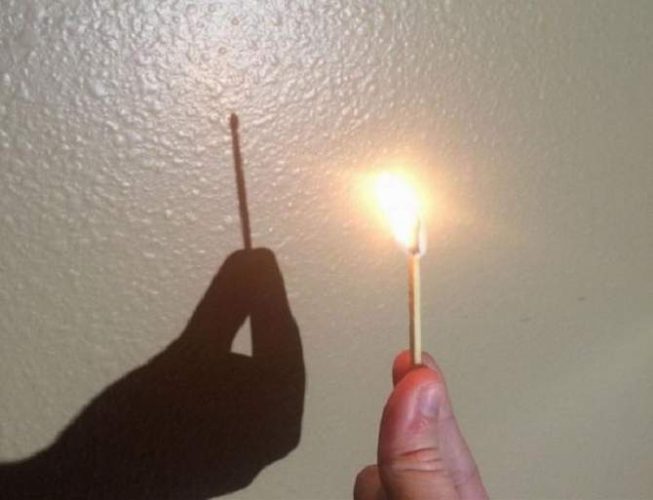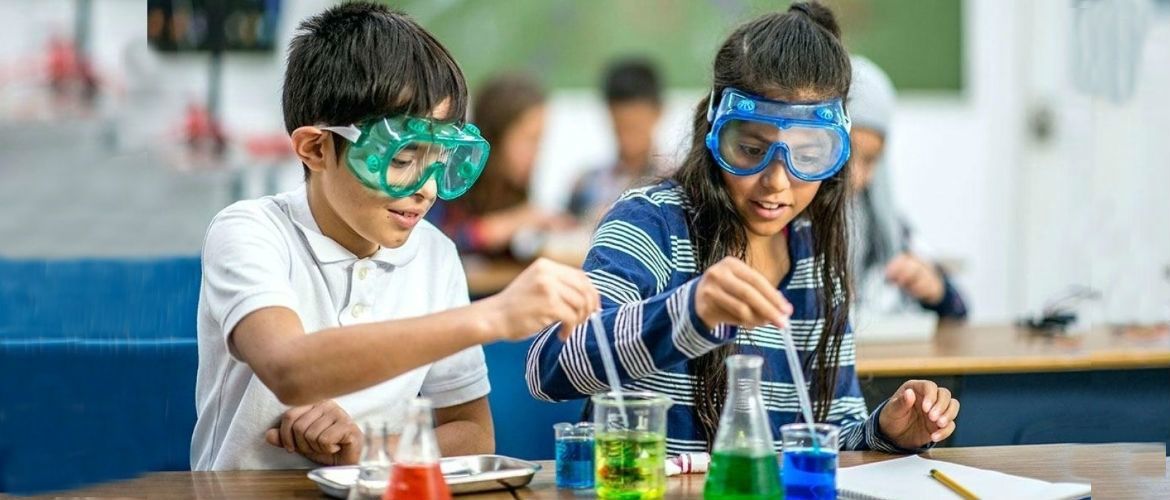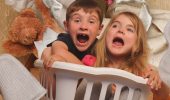Parents will surely agree that the children’s thirst for knowledge is huge. They are ready to risk to get to know what is hidden outside the door or what will happen if they give a pull at the rope. Parents’ task is to engage and excite the child and add magic to any experiment.
Of course, after performing an experiment, you should expound its mystery. Activities of this nature will incite to a child’s development and help to have a great time. Joy-pup editorial team has found five simple, but very interesting experiments that parents can show to their children.

Coca-cola and milk
You will need: a bottle of Coca-Cola and milk

What will happen if you mix Coca-Cola with milk? Even adults would like to find out the answer to this question. Such an experiment will overjoy any child. We need to pour off about half of the liquid from the bottle. Then by making a swirl we pour the milk into it. Close the bottle and wait for the magic. That’s what will happen in the bottle.

In an hour or so the milk will curdle and change into flakes. Such a reaction is caused by orthophosphoric acid, which Coca-Cola contains in quantity. It enters into reaction with milk protein. As a result dark flakes fall to the bottom of the bottle and the liquid becomes lighter.
Where is the fire of the match?
You will need: a match, a flashlight
Find a wall of non-combustible material. There shouldn’t be any flammable things near you. Make sure that the experiment with fire is safe and only then start.

Light a match and keep it at a distance of 10-15 cm from the wall. Switch on the flashlight and direct it at the match and the wall. Look at the shadow and you will see that no fire is visible on the wall. You will see only a shadow from a match and a hand.
This experience shows that fire transmits light, so it does not cast shadows.
Malachite egg
You will need: a liter glass jar, an egg, plasticine, dry copper sulfate, water, gloves.

This experiment is more complicated, therefore it is suitable for children at the age of 5-10. First, you need to remove the egg white and the yolk from the shell, making 2 holes on the opposite sides. Blow the contents out of the shell. You can put some plasticine inside. It creates a ballast not entering into a chemical reaction.
Pour 0.5 liters of warm water into a jar. Then add a tablespoon of copper sulfate to the liquid, stirring it until it completely dissolves. After that put on gloves and dip the egg in water. Thanks to the plasticine ballast, it will sink to the bottom or will be immersed completely in the solution. If the egg floats near the surface, add plasticine inside the shell.
Now you can observe the reaction. This experiment teaches patience because you will need to wait for the results for about a month. But it’s worth it!
What will happen? Firstly, small bubbles will cover the shell. A week later, the egg will get a green-blue hue. In a month you will have a malachite egg in the jar.
Why did it happen? The thing is that the shell consists of calcium carbonate. It reacts with copper sulfate. As a result we get malachite – the main copper carbonate. And the bubbles that you saw at the beginning of the experiment were caused by carbon dioxide, which is also released during the reaction.
Multicolor cabbage
You will need: 4 cups, water, Chinese cabbage leaves, food colors
Children love exciting and unusual experiments. Coloring cabbage leaves will be a very interesting activity for the children.

For a miracle to happen, pour water into each glass and dissolve the food coloring. Place one leaf of cabbage in each bowl. This can be done in the evening or afternoon. Now leave the glasses til the morning (and do not spy!) Getting out of bed, the child will definitely run to check the results of the experiment. And believe me, they won’t disappoint him or her.
In the glasses, you will see bright leaves, that changed their color due to the capillary effect. Water spreads in narrow leaf tubes, transferring coloring along with it. This is how plants feed with water.
Sweet crystals
You will need: 2 glasses of water, 5 glasses of sugar, wooden sticks, transparent jars or glasses, thick paper, food coloring.

Do you know a child that doesn’t like sweets? And if a child will make the candies on his/her own, there will be no limit for joy. The kid will definitely want to tell all friends about this experiment and share unique candies with them.
So the magic begins! At first, make the sugar syrup by mixing 0.25 glass of water with 2 teaspoons of sugar. Then spread some sugar on thick paper. Ask a child to take wooden sticks and wet them with syrup. Dip them in sugar so that the crystals stick around at all sides and let them dry till the morning.
On the next day, you need to dilute 5 cups of sugar in 2 glasses of water. The water should be warm. Pour the syrup into 5 transparent jars and wait about 15 minutes. If you forget about the jars with the prepared liquid, you will have to prepare the syrup again. Otherwise, crystals won’t appear.
It’s time to ask your child to pour the colorings into jars. Choose child’s favorite colors to make the containers colorful and bright. When the liquid will be fully colored, dip the prepared sticks into each container.

It is important that the sticks do not touch the sides. Fasten them with clothespins. Watch the crystals gradually growing on your workpieces. This is real magic! Believe me, the child won’t go away from the colorful jars.
Take the candies out of the jars or glasses when they will be ready. This experiment must be explained to a child simply. When water settles to the bottom of the container, sugar begins to store up at the sides of the glass and on the sticks. This is how multi-colored miracle crystals grow.






Only registered users can leave comments